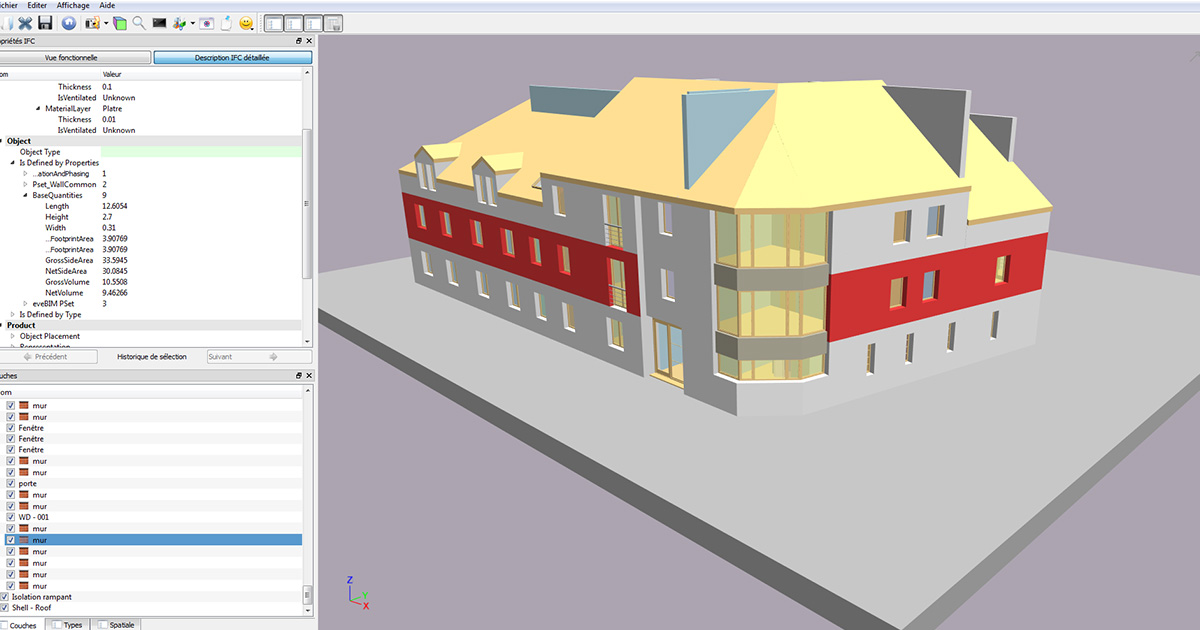Scientific and technical programsDigital Technologies

eveBIM-Viewer: display a selected element
The digital transition in the construction industry and territorial development is transforming the way things are done, improving the productivity and long-term performance of projects. Multi-scale BIM is facilitating the transition by optimizing information sharing between project stakeholders through digital modelling of the new building or local area, providing useful and reliable information at the same time. Since 2010, the CSTB has been developing its expertise in multi-scale BIM in its digital R&D program. A trusted third party, the CSTB guides the sector in its digital transition by supporting innovative and pilot projects at every step of deployment.
Fundamentals of the digital approach
The CSTB has developed methodological solutions and software associated with a collaborative BIM work environment. It provides BIM kits to project stakeholders to favor information exchange and data consolidation, from the planning phase through to the operational phase. With its partners, the CSTB also explores new uses of BIM, during consultation and demolition phases, for example.
Among the tools offered by the CSTB, the eveBIM viewer is combined with an online exchange platform. The CSTB is also testing a new generation of configuration management tools / e-catalogs, dedicated to the specification of components. In BIM mode, these tools offer a description of the systems and their installation, greatly aiding the choice of materials and products.
Favoring and expanding the different uses of BIM
The CSTB facilitates the use of BIM standards for each trade by developing modules, services and software tools. These enable the extraction and structuring of the data of digital models. This is very helpful to stakeholders for energy, thermal, acoustic and economic assessments, etc.
The CSTB also offers technical interoperability solutions, so that calculation and simulation software can be connected directly to the digital model (BIM2SIM). More recently, the CSTB initiated research to design pivot models, which rationalize the sets of information needed for simulation, thereby increasing efficiency.
Developing BIM for smart cities
One question raised by the research concerns the acquisition and digitization of data on existing building stock to support the digital city. The CSTB is working on developing a protocol to represent the urban built environment in standard BIM formats, in a reliable, long-term and economical way. This requires research into the segmentation and semantics of 3D meshes and their combination with urban databases.
This work is supplemented by experimentation in urban monitoring to update digital models with data from on-site sensors. More importantly, simplified and reliable access to data could soon be based on emerging technologies, such as artificial intelligence, robotics and blockchain technology, to meet the needs of stakeholders.




